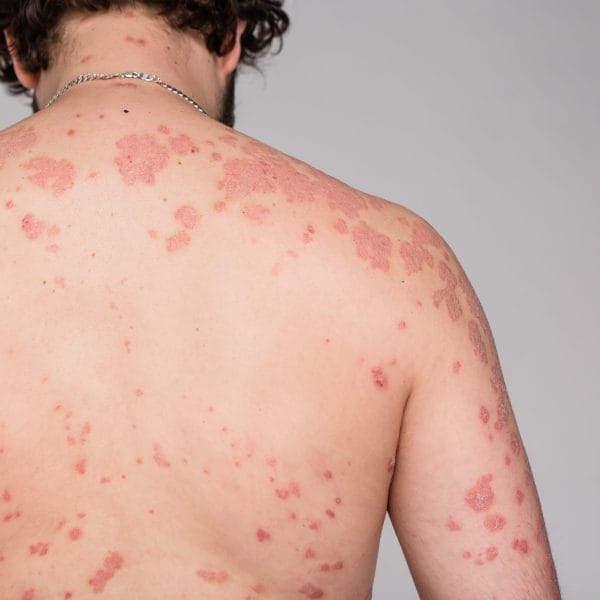Skin Cancer IN Burbank, CA
Skin Cancer IN Burbank, CA
What is it?
Each year about a million people in the United States are diagnosed with some form of skin cancer. The skin is made up of two main layers and several types of cells. The top layer of the skin is the epidermis and it contains three kinds of cells: flat and scaly cells on the surface known as squamous cells; round cells known as basal cells (which divide and form the squamous cells); and melanocyte cells, which produce melanin, the pigment that gives our skin its color. The epidermis is mostly made up of squamous cells. The basal cells are found under the squamous cell layer at the base of the epidermis. This base cell layer also contains the melanocyte cells.
The two most common types of skin cancers are squamous cell carcinoma and basal cell carcinomas. Bowen’s Disease and incipient squamous cell carcinoma are early symptoms of possible squamous cell carcinomas and should be treated immediately. The melanocyte cells, which lie scattered in the basal layer of the epidermis and in the dermis ( in groups of cells called moles) can turn into melanoma. While basal cell carcinomas rarely spread throughout the body, squamous cell cancers and melanomas often do.

Types of Skin Cancer
Squamous Cell Carcinomas & Pre-Conditions
Squamous cell carcinoma affects more than 200,000 Americans each year. This cancer can occur on many areas of the body but is most common in areas exposed to the sun and is confined to the epidermis. Anyone with a high amount of sun exposure is vulnerable to and can develop squamous cell carcinoma. People with fair skin and light hair and eyes are at a higher risk for the condition. Pre-cancerous conditions can act as early warning signs for the disease and speed up treatment. Some of the common precursor conditions include Actinic or Solar Keratosis and Bowen’s Disease. Bowen’s Disease often appears as a persistent red-brown, scaly patch similar to psoriasis or eczema. If it is left untreated, it can invade deeper into the skin layers and form squamous cell skin cancer.
Basal Cell Carcinomas
Basal cell carcinomas are the most common malignancy in humans. They occur most commonly in Caucasian or lighter skin people who have high sun exposure and are between the ages of 40-80. Most Basal Cell Carcinomas (BCC) occur on the head, nose and neck. There are different variations of BCC, including nodular, pigmented, sclerosing and superficial. Nodular BCC is similar to a non-healing sore which is round or oval and often pink, skin-colored or red with a wax-like border and occurs mostly on the face or nose in the form of a singular lesion. Superficial cell BCC might appear as round, irregularly shaped scaly plaques that might be raised and have a translucent rolled border. Superficial cell BCCs are usually found on the trunk. Pigmented BCCs are similar to the nodular or superficial lesions but are pigmented instead, making them a darker color – often brown, black or blue. Sclerosing BCCs are the least common yet most aggressive form. These appear as yellow or hyper-pigmented lesions that might look like scars.
Melanoma
Malignant melanoma is the most serious of all skin cancers. If not treated promptly, this cancer could be fatal. Malignant melanoma often first appears as a mole, which grows and is uneven in size, shape or color. To monitor the symptoms of melanoma, it is important to watch and observe the rate of growth for a mole. In men, melanoma is usually found on the area between the shoulders and hips or on the head and neck. In its early stages, melanoma is called cutaneous melanoma. It is referred to as metastatic melanoma when it begins to spread. While spreading, melanoma cancer cells can also be found in other areas of the body, such as the lymph nodes, liver, lungs or brain. Some common risk factors of melanoma include prior family history, non-cancerous unusual moles, many males older than 50, several freckles, fair skin and light eyes, severe sunburns and immunosuppressive therapy. Common signs or symptoms of melanoma include a skin growth that increases in size and is a varied tan, brown, pink, red or multicolored, a mole that rapidly changes in size, color or texture, a growth that continuously itches, burns and scabs, or a long-lasting open sore. To assess whether or not a mole could be malignant, it is helpful to follow the ABCDE’s rule. Moles that are Asymmetrical or irregular in shape, have uneven Borders, contain multiple shades or Color usually brown and black, and often have a over 6mm Diameter are more likely to be malignant and should be examined immediately.
FAQ'S
Skin cancer is the most common cancer type in the United States and makes up 50 percent of all cancers. The most common causes of skin cancer are genetics or exposure to ultraviolet radiation or UV rays from the sun. Artificial sources of UV rays such as tanning beds can also cause skin cancer. People living in an area with a high level of UV ray exposure are more likely to get skin cancer.
The key in skin cancer prevention is protection from the ultraviolet rays of the sun. Since skin cancer often occurs after a lifetime of prolonged sun exposure, it is best to develop safe sun exposure habits from childhood. Exposure to the sun, especially the midday sunlight, should be avoided. Protective clothing such as hats and long sleeved shirts can help block out the harmful radiation. Regularly applying sunscreen, 30 minutes prior to sun exposure in two layers 15 minutes apart and reapplying 3-4 hours during exposure, can also protect against the UV radiation. Preventing skin cancer is an early step that everyone can take by following a simple skin protection regime.
Skin Cancer Treatments

There are many treatment options available for skin cancer including curettage and electrodessication, cryosurgery, routine excision, light and laser therapy and Mohs micrographic surgery. If the melanoma is localized, or limited to the skin, it can be removed by surgical excision. Basal and squamous cell carcinomas can be treated with excision, curettage, light or laser therapy, Mohs micrographic surgery, or occasionally by topical prescriptions or cryosurgery.
Treatments
Topical Prescriptions
There are two cream medications that have been used to treat superficial or small skin cancers, 5 fluorouracil cream and imiquimod cream. This treatment is not 100% effective but can be very useful in patients who cannot tolerate surgery or radiation therapy.
Cryosurgery
Freezing (Cryosurgery) skin cancers is not done in the US much anymore as we have more effective treatments with less pain and shorter healing times now. We do use this method for pre-cancerous actinic keratosis lesions.
Light & Laser Therapy
Skin cancer can be treated with light or laser therapy. The laser therapy is often used for cancers that involve the outer layer of the skin. The light therapy is most often used to heal common conditions such as Actinic Keratoses that occur from sun damage. Photo Dynamic Therapy (PDT) technology can also be used to enhance the effectiveness of these treatments. Photo Dynamic Therapy combines a light source and a photosynthesizing agent to target and destroy cancerous cells. It was recently approved by the FDA to treat certain cancers including Actinic Keratosis.
Curettage & Electrodessication
This method was the most popular surgical method for removing skin cancers until Moh’s Micrographic Surgery became available in most cities in the US. We still use this skin cancer removal method for certain patients who cannot tolerate regular surgery or radiation treatments, such as those that are very old, very ill or are confined to skilled nursing facilities. The cure rate can be as high as 93% with this technique.
Radiation Therapy
Basal Cell Carcinomas and Squamous Cell Carcinomas are radiation sensitive but Melanoma is not. In select skin cancer patients and lesions, this method may be recommended. As recurrence of the cancer in radiated skin is a possibility, most Dermatologists reserve this treatment for very select patients. Radiation therapy may also be used in conjunction with surgery for lesions that are more likely to metastasize.
Traditional Surgery and Mohs Micrographic Surgery
Mohs is a method of excising skin cancers such as Basal and Squamous Cell Carcinomas under local anesthesia. Mohs surgery combines the surgical removal of the tumor with an immediate microscopic examination of the tumor and its underlying diseased tissue. Where further cancer is noted, additional layers are taken until a level free of tumor is reached. By removing tissue only where cancer is known to be present, the technique combines a high cure rate, has the lowest change of regrowth, minimizes the potential for scarring or disfigurement and is the most exact and precise means of removal.Traditional surgery ( non Moh’s) is often used for skin cancers below the neck that are not very large, that have a more benign histopathology and in cases where the patient cannot tolerate the length of surgical time needed in Moh’s surgery cases.
